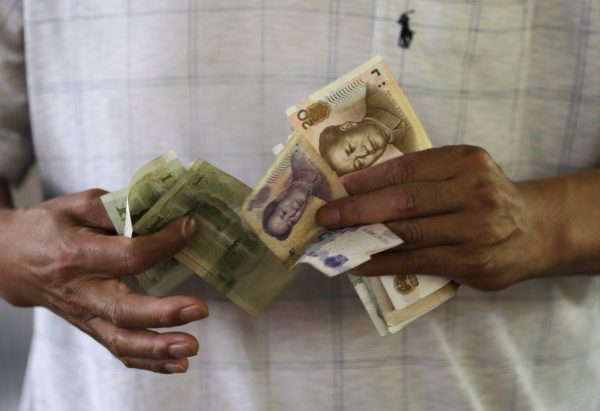Later, the PBC introduced a new central parity rate-settling mechanism. According to the new rule, the RMB exchange rate with the US dollar was determined by the previous day’s closing price and the needed change in the current day’s RMB exchange rate against the dollar, which in turn is determined by the difference between the theoretical value that can keep the index of a given currency basket over the previous 24 hours (later it was changed into 15 hours) unchanged and the previous day’s closing price.
This arrangement is intended to achieve exchange rate stability and minimise the use of foreign exchange reserves. But this is essentially mission impossible. It is only when market pressures on the RMB coincides with the needed changes in the RMB exchange rate can the current day’s RMB exchange rate against the dollar be set without the need for PBC to intervene in the foreign exchange market.
The new rule can slow the pace of devaluation because the determination of the next day’s central parity rate will take into account changes in the dollar index. If the dollar index has fallen over the past 24 hours, the rise in the theoretical RMB exchange rate could more than fully offset the impact of the fall in the previous day’s closing rate on today’s RMB central parity rate.
The uncertainty of the RMB central parity rate determination has increased significantly. No one can figure out tomorrow’s RMB central parity rate until the opening of the market when the theoretical RMB exchange rate can be calculated based on the information available on the dollar index. The central bank is pleased that the new mechanism brings uncertainty, as this can curb shorting activities and reduce depreciation pressure on the RMB.
But this new pricing mechanism will not clear the market. The two-way fluctuations are only partially market-driven and thus cannot be sustained. Speculators face more risks, but PBC still needs to spend foreign exchange reserves to achieve the central bank’s preferred exchange rates when facing devaluation pressure in the market.
The RMB exchange rate started to stabilise after 2017. This stabilisation was driven by international and domestic factors and cannot be attributed to the success of the new central parity price–setting rule.
China’s exchange rate policy is characterised by a fear of floating. For a long time, the RMB was undervalued. While undervaluation is conducive to China’s export drive and economic growth, it leads to a misallocation of resources across borders. As a poor developing country, China accumulated some US$4 trillion of foreign exchange reserves. When the RMB is under devaluation pressure, the stability of the currency actually encourages the unwinding of hot money and facilitates capital flight. Within two years of 2014, China’s foreign exchange reserves fell by an astronomical US$1 trillion.
China should stop designing any exchange rate regimes that need regular government intervention, as these policies lead to market distortion and national wealth losses. It is not worth the costs to continue with an exchange rate regime that is not based on market demand and supply. On the one hand, the central parity rate-setting rule makes it impossible for the RMB to truly be pegged to a basket of currencies because of the incorporation of the closing rate into the determination of the RMB central parity rate. On the other hand, the PBC often has to intervene against market pressure. The PBC likely hopes that this mechanism will help stabilise the RMB exchange rate and gradually release depreciation pressures. But this mechanism is cumbersome and intransparent.
China’s hands have been tied for more than a decade by the inflexibility of the exchange rate, which is one of the most important — if not the most important — prices. If the exchange rate does not reflect market supply and demand, a misallocation of resources across countries and across generations is inevitable. As a result of the distortion, China has been importing ‘dark matter’ for years.
As one of the largest capital-exporting countries, China has run large investment deficits for many years. This is already very bad. Now China’s foreign assets may have fallen significantly, while its foreign liabilities may have increased. This pattern in the international balance of payments will create serious problems in the future for an ageing China. A distorted exchange rate is a major contributor to this problem. Chinese authorities must make up their minds quickly to complete the drawn-out reform of the country’s exchange rate regime.
In recent quarters, the PBC has stopped its daily intervention in the foreign exchange market. This is a very positive development. Allowing the RMB exchange rate to float is the only way for China to correct its external imbalances and allow monetary policy to focus on promoting growth, prices and financial stability.
Yu Yongding is a Senior Fellow at the Chinese Academy of Social Sciences and former member of the monetary policy committee of the People’s Bank of China.
This article is abridged from Yu Yonding, ‘The reform of China’s exchange rate regime’ in Ligang Song and Ross Garnaut (eds.), Forty Years of Chinese Reform, China Update, ANU Press, 2018.

